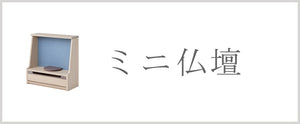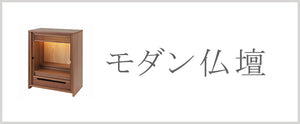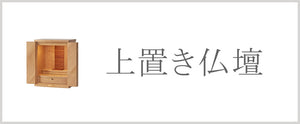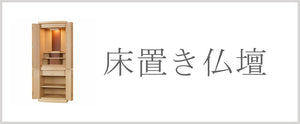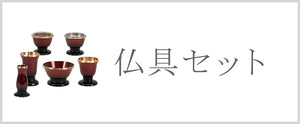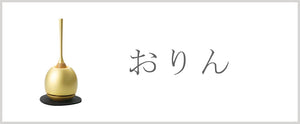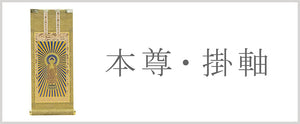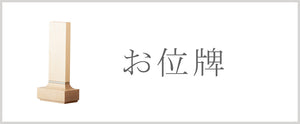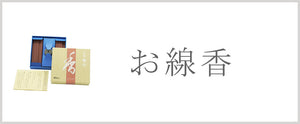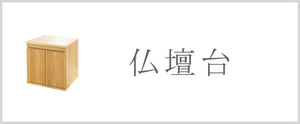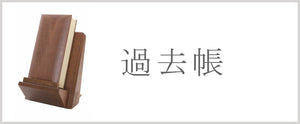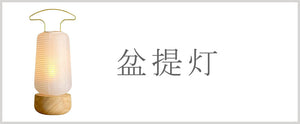Last updated:
Release date:
The issue of replacing one's Buddhist altar arises for a variety of reasons.
"What is the going rate for offerings?"
"What are the etiquette and procedures?"
In this article, we will explain the key points to consider when purchasing a new Buddhist altar.
Various reasons for replacement
There are many reasons for replacing your Buddhist altar, depending on the life event that triggered it.
Here are five common reasons:
The Buddhist altar is old
Many people want to replace their existing Buddhist altar because it has become outdated, and properly offer prayers for their ancestors.
Some people begin to pay attention to Buddhist altars after a family member passes away or because they need to prepare for a memorial service.
House reconstruction and renovation
Some people consider replacing their traditional Buddhist altar when rebuilding or renovating their home because their current one no longer fits the atmosphere of the room .
In recent years, many people do not have a Buddhist altar room in their homes, so traditional Buddhist altars do not fit in with living rooms or bedrooms, and an increasing number of people are considering replacing them.
The size of the altar does not fit
In some cases, people move to a new place and are no longer able to store their large Buddhist altar, so they have to buy a smaller one.
Taking over the family Buddhist altar
Some people have decided to take over the Buddhist altar because their parents' home has become vacant, but they are unable to keep it at home because it is too large.
In this case, many families choose to keep only the principal image and memorial tablet and replace only the Buddhist altar.
For Children
Parents who have relatively more time and money to spare may consider replacing their devices for their children's sake.
People tend to choose furniture-style or small Buddhist altars that are less of a burden when passed on.
I feel anxious about replacing my Buddhist altar...is it really okay to replace it?
When purchasing a new Buddhist altar, some people may feel anxious about the following:
"Wouldn't it be disrespectful to our ancestors to make the Buddhist altar smaller than the existing one?"
"Wouldn't it be disrespectful to our ancestors to dispose of our expensive Buddhist altar and replace it with a cheaper one?"
"I don't have any knowledge about the sect, so I have vague concerns about purchasing new Buddhist altar equipment on my own..."
The bottom line is that no matter what size or price you choose for your Buddhist altar, it will not be disrespectful to your ancestors.
In fact, many people are replacing their furniture to suit modern living environments.
When is the best time to buy a new Buddhist altar?
Buddhist altars are increasingly being replaced for a variety of reasons, but is there a good time to do so?
If you are considering replacing your furniture due to aging or other reasons, but don't have a specific target date for when you should complete the replacement, Obon, Higan, or milestone memorial services (such as the third, seventh, or thirteenth anniversaries of a person's death) could be good targets.
However, generally speaking, there is no particularly suitable time or time that you should avoid replacing your phone, so it is fine to replace it at any time.
Three points to check before buying a new Buddhist altar
There are some points you should check before buying a new Buddhist altar.
Please check the following three points before proceeding with your replacement purchase.
Check the size and number of principal images and memorial tablets
First, you should check the size and number of the principal image and memorial tablets .
When replacing a large Buddhist altar with a smaller one, if you do not check the size and number of the principal image and memorial tablets, you may find that you cannot store them or that it becomes too cramped after the replacement.
On the other hand, if you are replacing your altar with one of the same size, you may want to continue using all of the Buddhist altar accessories you previously had, in addition to the principal image and memorial tablets.
For those who want to place a large Buddhist statue or hanging scroll in a small altar, we recommend an altar with removable shelves.
Also, if you have a lot of memorial tablets, it may be a good idea to take this opportunity to organize and reduce the number of tablets you have when you replace them.
Basically, memorial tablets for which the 33rd anniversary has already been held can be combined into ancestral memorial tablets.
Check the location of the altar
Next, check where you will place the altar.
If you decide where to place your Buddhist altar before purchasing a new one, it will be easier to get an idea of what design will suit it, which will be helpful when making your purchase.
Measure the space you have available and choose an altar that will fit within it.
Consult the temple about the arrangements for the memorial service
It is also important to consult about the arrangements for memorial services.
If you have a relationship with a temple, you will need to perform an ``eye-opening ceremony (putting the soul and spirit into it)'' for a new Buddhist altar, and a ``closing ceremony (closing the eyes, removing the soul and spirit)'' for an altar that you no longer need.
Nowadays, there are people who do not have any relationship with temples and do not hold memorial services, so ultimately it is up to you to decide based on your own feelings.
If you are planning to hold a memorial service, consult with the temple to decide on a date.
Deciding on the date of your memorial service before purchasing a Buddhist altar will make it easier to plan your schedule afterwards.
For example, if you have both a new and an old Buddhist altar, you can hold the ceremony on the same day, which may eliminate the need to travel to the temple for multiple memorial services.
The going rate for offerings to a temple when replacing a Buddhist altar
When asking a temple to perform the "eye-opening ceremony and eye-closing memorial service for a newly purchased Buddhist altar" as explained in the previous section, many people will be concerned about the average donation amount.
It is difficult to generalize about offerings, as they vary greatly depending on the region, relationship with the temple, income, etc.
Therefore, although the general market price is said to be between 10,000 and 30,000 yen, it varies depending on the circumstances of each household.
However, the number "4" is not well-liked, so it would be safer to avoid "40,000 yen."
Some temples make the amount of donations public.
Another option is to ask directly.
Since the person will come from the temple to your home, it may be a good idea to give them transportation expenses (car fare) in addition to the offering.
The going rate is said to be around 5,000 yen.
Please enclose your travel expenses in a separate envelope from your offering.
Either way, the important thing is to show gratitude.
Prepare yourself as much as you can.
How to dispose of an unwanted Buddhist altar. Average disposal costs
When you buy a new Buddhist altar, you also have to dispose of the old one .
Many people worry about whether it is okay to throw away a Buddhist altar they no longer need, but as long as you purchase one that you are satisfied with and perform a closing ceremony for the altar, it is fine to dispose of it.
Even if you do not hold a memorial service, it is important to express your gratitude to the old Buddhist altar at the end.
The most common way to dispose of them is to ask a Buddhist altar store to do it for you.
Depending on the store, they may also hold a memorial service for the Buddhist altar by burning it.
The average cost of disposal is around 10,000 to 100,000 yen.
Alternatively, you can dispose of it in accordance with your local government's disposal methods.
If you ask your local government to do it for you, disposal can be done relatively cheaply, costing between 500 and 2,000 yen, although this varies depending on the local government.
Another option is to consult your family temple (the temple that takes care of you).
However, recently, requests are often turned down due to concerns about disaster prevention and environmental considerations.
If the closing ceremony has already been held, there is no problem in asking a junk removal and recycling company to handle it.
Even if you replace it, your feelings will be passed on. Choose a Buddhist altar that suits your lifestyle.
There is no need to be bound by the idea that a Buddhist altar is something that is passed down from generation to generation.
The important thing is to provide a Buddhist altar that suits modern lifestyles and can be passed down without burden to anyone.
Even if you replace your altar, you can still keep your thoughts alive, so choose one that suits your lifestyle and environment.
Nagomi Kobo TOP page is here >


